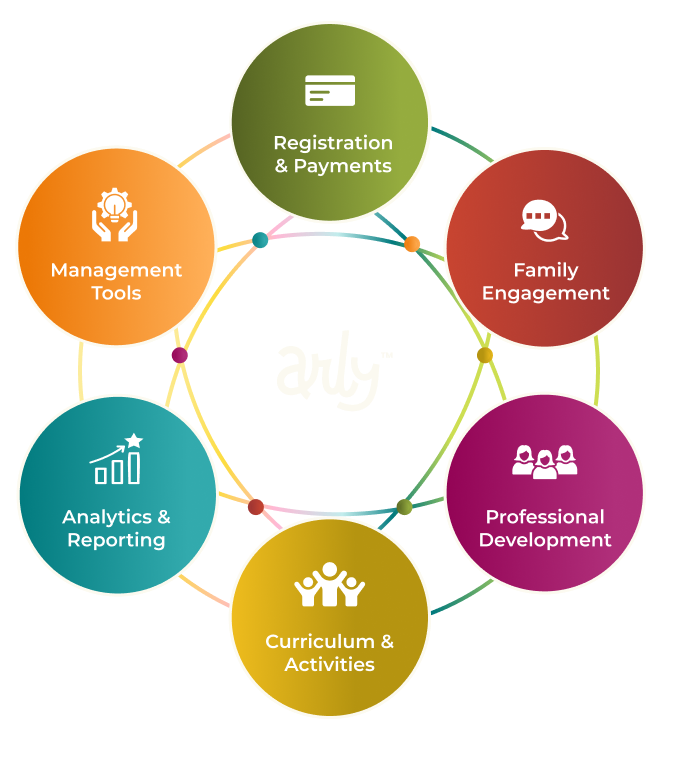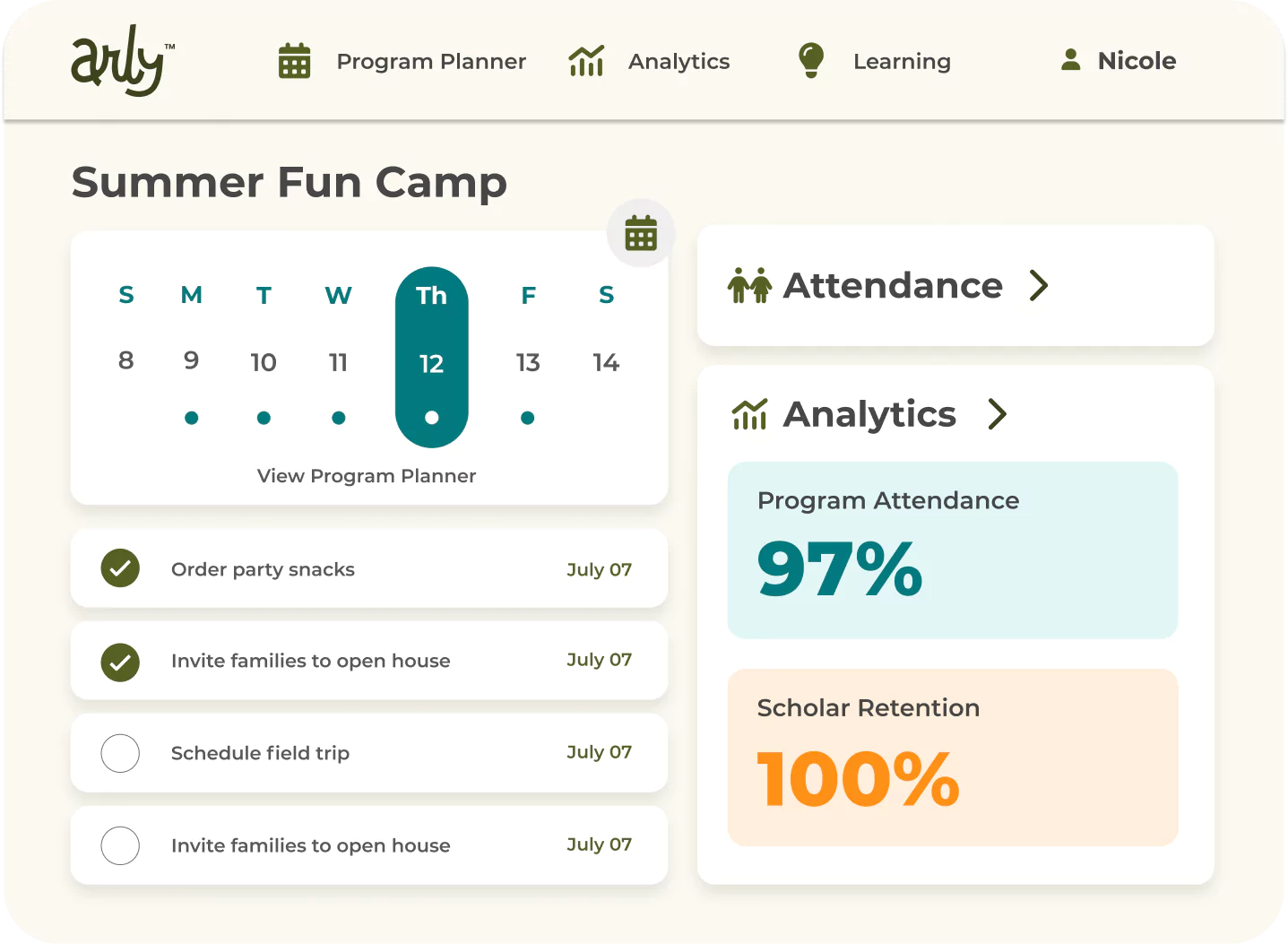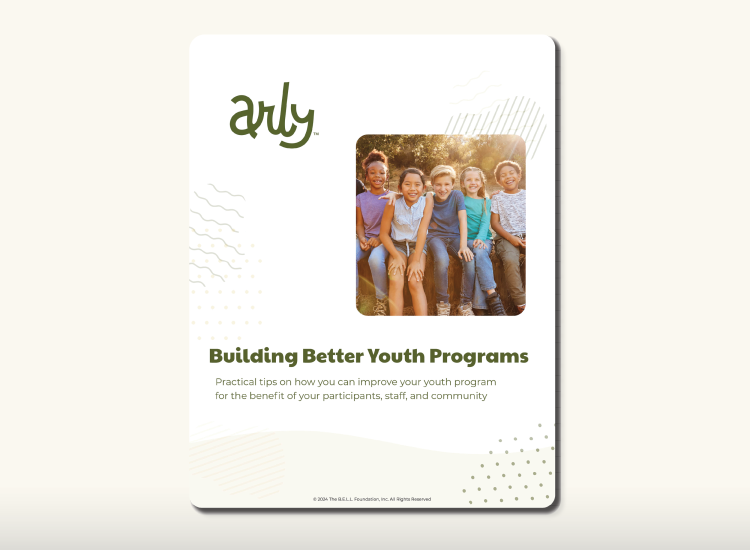5 Ways Your Team Can Get Involved in Family Engagement Strategies
By Arly Communications on July 14, 2023
When it comes to communicating with families and encouraging them to become more engaged and enthusiastic members of your youth program, everyone on your team can play a role. Research clearly shows a connection between meaningful family engagement and improved youth outcomes in education programs. Let’s look at some ways you can encourage collaboration and communication across your program for richer connections and shared enthusiasm around your mission.
1. Use staff training modules to ensure everyone is on the same page
When families think of your program, they probably won’t picture your building or your website—they’ll think of people. Each of your staff members—volunteers included—serves as the face of your program, so there should be consistency in the way they represent the program to parents, kids, and community stakeholders.
Onboarding and ongoing professional development both provide great opportunities to share practical tips, resources, and examples with your staff to ensure everyone is on the same page when it comes to big-picture things like your program’s story and when it comes to details like program policies. This way, your staff can communicate these things effectively. Training also provides a great opportunity to help staff members improve their approach to family engagement.
2. Encourage collaboration between staff members
Teachers, tutors, and coaches know just how important it is to support one another. In our summer 2022 survey, we found that collaborating with other teachers was a highlight for multiple youth program leaders.
Communicating with families and getting them more engaged in their kid's experience can present challenges, so why not encourage your staff to work through these challenges together? Give your youth leaders opportunities to talk through problems they’re facing in the learning space or with parents, to share ideas, and to receive encouragement. This collaborative spirit can go a long way toward helping everyone in your program engage with families effectively and maintain a positive outlook.
3. Open the lines of communication between staff and administrators
Program administrators often gain helpful insights when they speak with staff members who are interacting directly with kids and families. For instance, drawing on their practical experience, teachers may quickly identify potential problems with what administrators put forward as a smart family engagement strategy. Or maybe they have family engagement ideas the administrative staff hasn’t thought of yet. Make sure teachers and other staff members are encouraged to share their thoughts with program administrators so you don’t miss out on these insights.
Talking to teachers and volunteers is also smart because they may have received feedback from parents and program participants that could be helpful for improving the program as a whole. Although administrators may have a better bird’s-eye view of the program, the bottom line is that the teachers and volunteers are the boots on the ground. Both perspectives are helpful when it comes to refining your program.
4. Implement the right tech tools to facilitate family engagement and communication
Even with the right training and the best of intentions, administrators, staff members, and volunteers may be at a loss as to how they can effectively engage with families if they don’t have the right tools at their disposal. As you talk with teachers and families, see what capabilities they’re lacking that they’d like to have access to.
A quality communications app for your youth program can make a world of difference. Look for a solution that allows you to share communications with specific classes or groups and send out program-wide messages. You’ll also want to find a solution that allows parents to write to your staff to ask questions or enter relevant information directly. Making communication convenient can remove barriers to family engagement while also making your program run more smoothly.
5. Use feedback and assessments to foster growth
There’s always more room for improvement! That’s why youth programs should remain on the lookout for ways they can enhance their communications and family engagement strategies among other aspects of their programming. Look for ways to measure your program’s success and gather feedback. For example, you might send out surveys to invite feedback from everyone involved in your program, including parents, students, staff, and your volunteers.
You can also invite your staff to use a rubric of sorts to assess the quality of your program and use assessments to track student success so you have an objective metric that can help you evaluate your program’s effectiveness. Keep track of the data you collect so you can continue to find ways to improve your program year after year and better meet and exceed participants’ (and funders’) expectations.
Foster Strong Connections and Convenient Communications with Arly
Solid communications and family engagement strategies can benefit greatly from the right tools. Arly provides these practical tools, along with a variety of resources, to help youth programs deliver quality programming and keep families engaged and informed.
Learn more about Arly by requesting a demo!






%20(30).png)

%20(45).png)

%20(49).png)